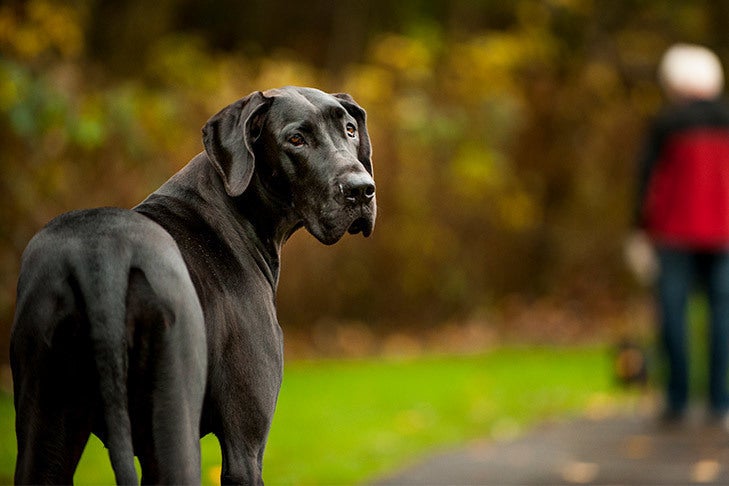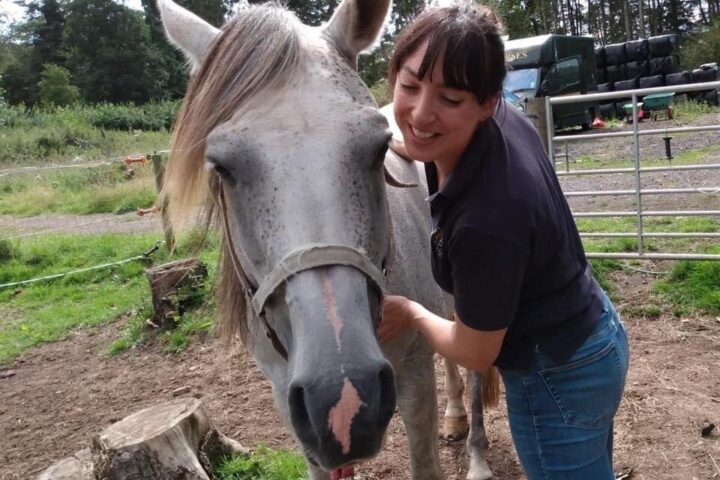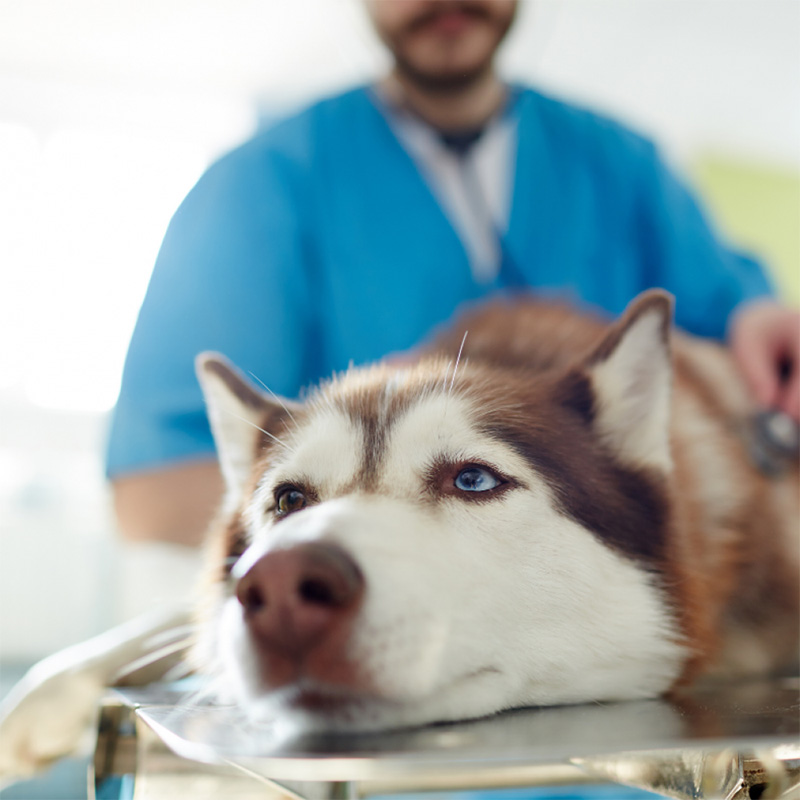Table of Content
Hip dysplasia develops when the hip socket is too shallow, or the femur head is deformed, resulting in a weak link and premature cartilage wear. Dysplasia is a medical term that refers to irregular growth or structure. Dysplastic hips are one form of canine degenerative joint disease . Puppies mature rapidly, with most dog breeds reaching full size within 8 to 18 months of age. Unfortunately, this accelerated growth raises the risk of certain diseases and accidents, such as hip dysplasia, a degenerative condition in which a dog's hip joints develop abnormally.

Giving your dog foods so high in calories may increase their weight, increasing the chances for hip dysplasia development. A major preventative measure and treatment available is to provide dogs with glucosamine and chondroitin sulfate. Providing these compounds in the form of chewable tablets, promotes and maintains joint health in dogs. The goal is to reduce pain and swelling while avoiding surgery as long as possible. These drugs are generally effective at relieving symptoms such as lameness and pain in dogs with mild to moderate hip dysplasia. “Bunny hopping” refers to the abnormal change in gait sometimes exhibited by a dog with hip dysplasia.
What are the Treatment Options for Hip Dysplasia in Dogs?
Home treatments are great as they are much cheaper than surgery or other treatment options the vet might suggest. They also offer the chance of much fewer side effects and other risks than pain medication or surgery. Thankfully, no matter the cause of your dog’s muscle loss, there’s a cutting-edge product that can help your dog's muscle health. Many conditions may cause the dog to exercise and move around less. And in a dog that is lacking in daily exercise, muscles will begin to fade as they’re not being purposefully or routinely used. A dog may show a disinterest in playtime or walks for a variety of reasons, both mental and physical.
Hydrotherapy can deliver excellent results for dogs with hip dysplasia. This therapy involves the use of an underwater treadmill or exercises in a swimming pool. The buoyancy of the water reduces the amount of pressure on your dog's joints and allows them to exercise their rear leg muscles with much less pain. Your vet can work with your dog on a variety of passive and active stretches, massages, and range-of-motion exercises to support their muscles and help strengthen the hip joints.
Honest Paws CBD oil for Dogs-Calm
Hip dysplasia is a deformity of the hip that occurs during growth. Some pets with significant signs of hip dysplasia or osteoarthritis on X-rays may not exhibit any clinical signs, while others with minimal changes may experience severe pain and lameness. During this growth stage, some dogs' hip joints may not develop properly, leading to hip dysplasia. When this happens, the ball and socket of the hip joint rub together, leading to the deterioration of the joint over time.

You can make treatment alternatives and a way of living adjustments to maintain your comfy canine well right into old age. Our shih tzu had surgery for hip dysplasia last March 2 and was trying to walk for a couple of minutes at a time after 2 weeks and some therapy. Unfortunately because of the enhanced community quarantine in our place , we cannot bring her out for therapy walk anymore. Any suggestions for therapy or medication, or can we have your thoughts on what happened why she is not using her hindlegs again?
.header--has-scrolled .logo__image--home width: 115.29411764705883px; height: 40px;
To be clear, I am not saying that your vet is wrong to suggest stem cell therapy. I merely wanted to put in a plug for the benefit of a specialist’s opinion before deciding on an expensive therapy like this. I hope you are able to find some good solutions that keep your pup happy and comfortable for as long as possible. The hip joint of a dog is made up of a rounded hip socket into which the ball of the femur fits.

The hip joint is the place where the femur meets the pelvis and connects to the hind leg. In dogs with moderate hip dysplasia, there is some damage to the hip joint but not enough to cause severe pain or lameness. To diagnose hip dysplasia, your veterinarian will perform a physical examination of your dog's hips by manipulating them while watching for signs of pain or discomfort. In addition to a physical examination, your veterinarian may perform bloodwork to assess systemic inflammation.
In many cases, though, the condition becomes noticeable in dogs in their middle or later years. Acupuncture can stimulate your dog's natural release of pain-relieving and anti-inflammatory chemicals. Along with massages, it can also improve your dog's blood flow and circulation, as well as the removal of metabolic wastes and toxins from the body. DPO/TPO surgery is usually done in young pets less than 10 months old.

Both bone surfaces are covered with cushioning cartilage that ensures proper fit and a good range of motion. Acupuncture, class 4 laser, stem cell treatments, PEMF therapy, and Traditional Chinese Medicine are other therapies that can help manage hip dysplasia. Your veterinarian may tell you surgery is the best option for hip dysplasia.
While surgery is an option, if the hip dysplasia is not severe enough, your vet will likely recommend starting with natural treatments first. Here are 8 ways you can naturally treat hip dysplasia in your dog. If you're the owner of a large breed dog, you've likely had a conversation with your veterinarian about the signs and symptoms of hip dysplasia. This hereditary condition most commonly affects German Shepherds, Golden Retrievers, and Labrador Retrievers, but it can actually happen in any breed of any size. These two words horrify big-breed pet owners, but the fact is hip dysplasia can occur in any size or breed of pet.
TPO is suitable for hip dysplastic dogs with no x-ray signs of osteoarthritis. Dogs qualify as TPO candidates if they are over five months of age but no older than one year. There are several surgical procedures available for dogs with hip dysplasia.
All parents, both pet and children parents make it their duty to offer the best to their young ones, including offering the best treatment options available. Some of these techniques you can start early on your pets help prolong their healthy and active years. Where more people start to look for arthritis and hip dysplasia natural remedies. I have my own tale of my dog's hip dysplasia, natural remedies, and years of extra love. Provides a natural source of both ingredients, which is better absorbed than the synthetic alternatives found in many dog supplements. Furthermore, a fracture of the bone near the joint can also lead to hip dysplasia.
They may want to add on an additional medication, or have you schedule a consult with a veterinary neurologist just to make sure the symptoms are not related to a nerve issue. Once a neurological problem is ruled out, your pup may benefit from physical therapy/rehabilitation. Ultimately, you know your dog better than anyone and should keep advocating for his wellbeing until his quality of life is restored. I hope you can find the help he needs to live his best life. Wishing you both many happy memories together in the future. I’m also a huge fan of Adequan injections for treating dogs with hip dysplasia.
Finding environmental factors is important so the causes of hip dysplasia can be identified. Hip dysplasia that needs treatment occurs in approximately 2-3 children per thousand. However, some studies have detected mild instability in up to one infant in six (15%). Hip dysplasia is about four times more common in girls than boys. Hydrotherapy is a great way for your dog to regain mobility, and it's also a fantastic way to help them lose weight. Canine rehabilitation practitioners and facilities, offering therapies such as underwater treadmill exercise, are becoming more prevalent.
They will also work with you to create a customized treatment plan to follow at home. Among the first things that your vet may do is adjust your canine’s back legs to evaluate the looseness of the joint and check for any grinding, pain, or lowered variety of motion. Your dog’s physical exam might include blood work because inflammation due to joint disease can be shown in the complete blood count. At your pet dog’s routine appointment, your vet will do a physical examination. Sometimes this examination is enough for your vet to suspect hip dysplasia.

No comments:
Post a Comment